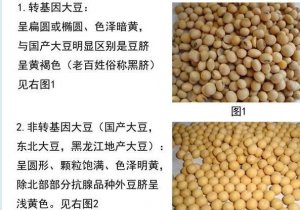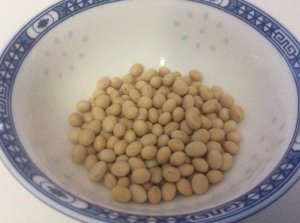Honey
Possible application of gene technology Labelling
Pollen from GM source plants (rapeseed, maize, lucerne/alfalfa) yes
Description of product
According to German honey regulations, honey is a fluid or crystalline foodstuff that is produced by bees. The basic components are therefore purely plant-derived: bees collect nectar (sweet secretions of plants) or honeydew (secretions from plant lice) and add their own secretions. In the honeycomb of the beehive, the honey then "ripens". The compounds responsible for the typical taste and aroma of honey develop thereby and the plant-based sugar and starches are split into their basic components (maltose, glucose, fructose). In addition to nectar, bees also transport pollen on their hind legs and this pollen also is contained in comestible honey.
The aroma, colour and taste of the honey is determined by the plants from which the bees have collected nectar and other secretions.
Possible application of gene technology
When bees harvest from genetically modified plants, the pollen of these plants will be present in the honey. Unlike nectar, pollen contains genetic information, which means that, in the case of a GM plant, it will also contain the new gene.
Melliferous rapeseed: In the EU, GM rapeseed has only been planted in field trials. In Canada, it has occupied more than 90 per cent of the area under rape cultivation since 1999.
 maize plants are not dependent on insects for pollination. The male flowers at the top of the maize plants are not attractive to bees because they do not produce nectar. Nevertheless, it is still quite possible for bees to collect maize pollen because pollen is needed for brood food.
maize plants are not dependent on insects for pollination. The male flowers at the top of the maize plants are not attractive to bees because they do not produce nectar. Nevertheless, it is still quite possible for bees to collect maize pollen because pollen is needed for brood food.
Several field trials have studied bee colonies that were placed by or in a field of GM maize.
 soybean is not a collection source for honeybees, traces of this plant are found in honey when bees travel through areas in which soy is cultivated. GM soybeans are cultivated on a large scale in Argentina, which is the most important producer of honey imported into Germany. Pollen from GM soy may therefore be detected in many Argentinian honeys, albeit in very minuscule quantities.
soybean is not a collection source for honeybees, traces of this plant are found in honey when bees travel through areas in which soy is cultivated. GM soybeans are cultivated on a large scale in Argentina, which is the most important producer of honey imported into Germany. Pollen from GM soy may therefore be detected in many Argentinian honeys, albeit in very minuscule quantities.
In the near future, a situation with regard to lucerne (also known as alfalfa) may develop as already is the case with rapeseed. This plant is used primarily as feed and often serves as a collecting area for bees. In the US and Canada GM lucerne is authorised for cultivation.
The ECJ ruling: Is pollen from GM plants permissible in honey?
On 6 September 2011 the European Court of Justice (ECJ) pronounced its memorable “honey ruling”. The judges had considered some fundamental questions, such as how the presence of pollen from GM plants in honey is to be assessed in terms of food legislation.
The key points:
Until now, honey containing pollen from GM plants did not legally have to be labelled as such. The ECJ ruling has changed this.
The Commission’s proposal needs the majority approval of the European Parliament and member states before it can be made law.

Possible application of gene technology Labelling
Pollen from GM source plants (rapeseed, maize, lucerne/alfalfa) yes
Description of product
According to German honey regulations, honey is a fluid or crystalline foodstuff that is produced by bees. The basic components are therefore purely plant-derived: bees collect nectar (sweet secretions of plants) or honeydew (secretions from plant lice) and add their own secretions. In the honeycomb of the beehive, the honey then "ripens". The compounds responsible for the typical taste and aroma of honey develop thereby and the plant-based sugar and starches are split into their basic components (maltose, glucose, fructose). In addition to nectar, bees also transport pollen on their hind legs and this pollen also is contained in comestible honey.
The aroma, colour and taste of the honey is determined by the plants from which the bees have collected nectar and other secretions.
- If the commercial labelling of the honey indicates a specific plant (e.g.
 rapeseed or lime-tree honey), it must be provable that a minimum of fifty per cent of the source nectar stems from this plant.
rapeseed or lime-tree honey), it must be provable that a minimum of fifty per cent of the source nectar stems from this plant. - No materials may be added to honey, nor may any inherent components be extracted.
- The designation of honey according to specific sites or regions is allowed only when the honey stems exclusively from the noted area.
Possible application of gene technology
When bees harvest from genetically modified plants, the pollen of these plants will be present in the honey. Unlike nectar, pollen contains genetic information, which means that, in the case of a GM plant, it will also contain the new gene.
Melliferous rapeseed: In the EU, GM rapeseed has only been planted in field trials. In Canada, it has occupied more than 90 per cent of the area under rape cultivation since 1999.
- It must be assumed that Canadian honey contains pollen from genetically modified
 rapeseed particularly when identified as "rapeseed honey" or "rapeseed-clover honey".
rapeseed particularly when identified as "rapeseed honey" or "rapeseed-clover honey".
In a variety of honey products that have been imported from Canada, pollen from genetically modified rapeseed has been detected. Analyses by German food surveillance authorities have found pollen from GM rapeseed in Canadian honey. As much as a third of the total pollen present may be comprised of GM pollen. - Rapeseed honey from Germany or Europe only contains pollen from GM rapeseed when the beehive has stood in the immediate vicinity of a test field.
Several field trials have studied bee colonies that were placed by or in a field of GM maize.
- Maize was detected in a few honey samples but the quantities are extremely small and cannot usually be detected.
- GM maize is present in bee pollen loads when bee colonies are set up near GM maize fields (bees carry the pollen load in their pollen baskets and brush it off when they enter the beehive).
In the near future, a situation with regard to lucerne (also known as alfalfa) may develop as already is the case with rapeseed. This plant is used primarily as feed and often serves as a collecting area for bees. In the US and Canada GM lucerne is authorised for cultivation.
The ECJ ruling: Is pollen from GM plants permissible in honey?
On 6 September 2011 the European Court of Justice (ECJ) pronounced its memorable “honey ruling”. The judges had considered some fundamental questions, such as how the presence of pollen from GM plants in honey is to be assessed in terms of food legislation.
The key points:
- Pollen from GM maize in honey is not regarded as a living genetically modified organism (GMO) that is capable of reproducing.
- Pollen is classed as a food ingredient. This means that the same food legislation applies to pollen that applies to every other ingredient.
- Pollen in honey is also treated the same way as all other ingredients in terms of genetic engineering. If pollen from a GM plant is present in honey, then it is an ingredient “produced from a GMO”. Food with this kind of ingredient – and therefore honey containing GM pollen – can only be sold if the GMO in question is authorised as a food. It makes no difference how high the level of GM pollen is or whether the GM pollen is introduced intentionally or adventitiously into the honey.
- This means that honey may contain any traces of pollen from a GM plant provided the plant has been authorised without restriction in accordance with the terms of the EC regulation on genetically modified food (1829/2003). If this is not the case, the honey in question cannot be marketed (zero tolerance).
- Germany and most other EU countries do not currently grow any GM crops. This means that the ECJ ruling is not relevant here in the short term.
- It is primarily imported honey products that are affected. For instance, pollen from GM rape can often be detected in Canadian honey. This honey is permitted in Germany as well, provided the GM rape line in question is authorised for food and feed use in Europe. Honeys from Argentina and Brazil could contain pollen from GM soybean and – theoretically – from GM maize. The majority of the GM soybean and maize lines grown there are, however, authorised for food use in the EU.
Until now, honey containing pollen from GM plants did not legally have to be labelled as such. The ECJ ruling has changed this.
- Pollen from GM plants is now regarded as an ingredient, for which – as for all other food ingredients – there is a labelling requirement.
- Pollen must be mentioned as an ingredient on honey labels if the amount of GM pollen is higher than 0.9 per cent (labelling threshold) of the total pollen in the honey (this applies only to authorised GMOs). It is not technically possible to measure the exact GMO proportion of the pollen contained in honey.
The Commission’s proposal needs the majority approval of the European Parliament and member states before it can be made law.



